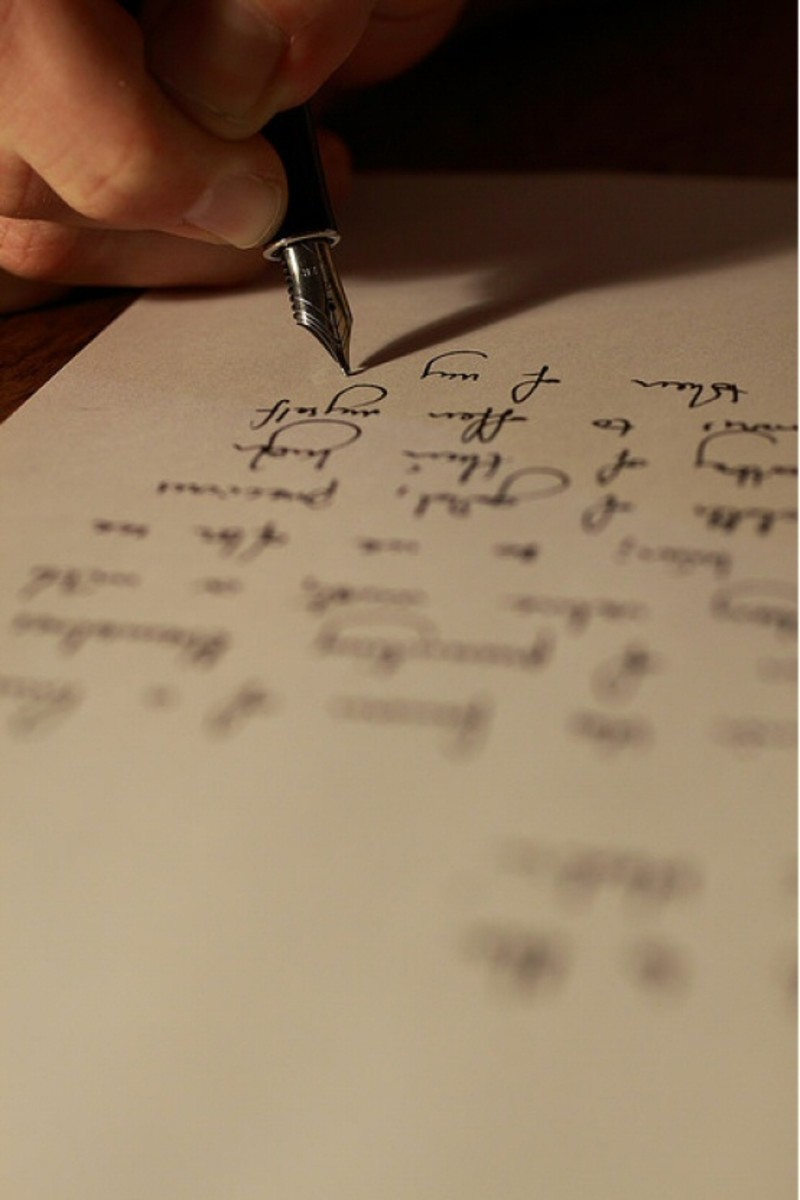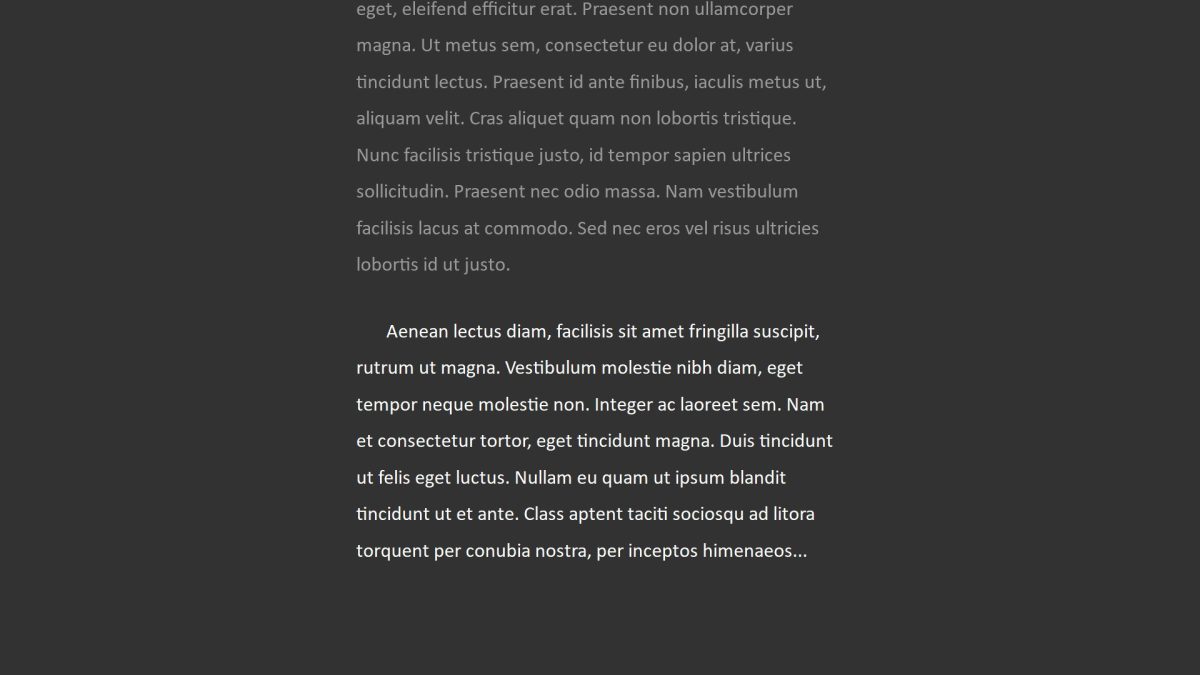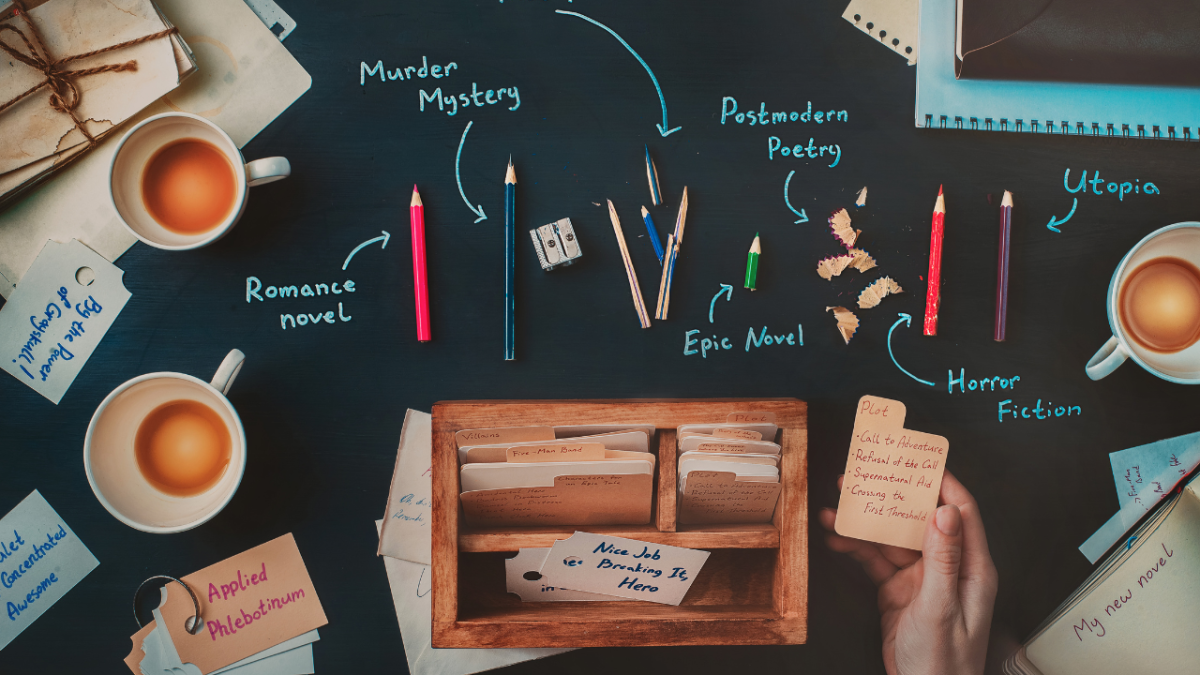Being Inspired to Write with Prompts
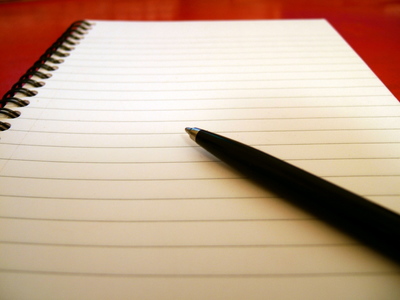
As a writer, I struggle with writer's block all the time. I have a hard time finding something that will inspire me enough to write my next big thing. And that is my problem: I am looking for something to inspire my next novel, the novel which will be the one. I can't do that.
However, what I can do is simply write.
Most days however, I have a hard time figuring out just what to write. Writing what is just in my head can become tedious for me, as it is mostly processing what has happened in the day. I watch my life happen from a front row seat. I don't want to write about what is happening in my every day life!
So, I look for things that will help me write about not-life - well, not my life any way. Here are some ways I go about it.
Coaxing the Word Thief
Sometimes, it isn't just about not knowing what to write. I often have ideas that are good, but when I sit down to put pen to paper or fingers to keyboard, there are no words to explain what I want to write.
This is fine. I am slowly learning how to lure the Word Thief out into my own trap.
I write an outline. I write what I want to happen, when I want to have it happen. During this time, things come to me, such as a sentence. I might be structuring a timeline for a character which goes like this:
A male who at the age of 19 finds a wife.
By the age of 24 she dies which is when the story really begins.
At the age of 30 he realizes his wife whom he's never forgotten was murdered, and he must go about proving it. All his friends and family think that his grieving has gone on too long and he's become delusional now, and attempt to put him into therapy.
As I write this timeline, I might interject phrases I plan on using.
- "She died. I wasn't even there. I wasn't even around to say goodbye, and then she was gone."
- "The pieces began to add up. The Batista, the limo, her last text message to me, and the trail of roses. It all spelled out a stretch of red foam - the Red Tide! She had been poisoned by the Red Tide!"
- "Of course I don't believe you, Jim! She dies 6 years ago! I loved her too, but it's time to let go."
When I inject random sentences to go into the timeline of things, it makes it easier to form the idea, to tie the pieces together.
It used to be that when I started writing, I began my story in the middle and worked backward and forward, creating the beginning and end later. I was always so excited to get to the juicy parts, the scenes that wanted to be written that I couldn't bare to make myself go through waiting for a good opening line to hit me. This was a fun exercise as well, which worked wonders. These days I have so much fun finding creative ways to take the reader to a new direction than the story originally leads them to believe they are going, that I have no troubles writing introductions and beginnings.
Be prompted!
- writing prompts
These are some of the daily writing prompts I use in class. If you have questions, comments, or suggestions please let me know. Other stuff I'm working on is over here. If you really like these... - Creative Writing Prompts | WritersDigest.com
Get daily creative writing prompts for your short story, fiction or nonfiction novel, essay and more at WritersDigest.com. - creative writing prompts . com ideas for writers
Creative Writing Prompts collection of writing prompts and story starters for writers. Come up with creative content for blogs and blog stories with the help of these creative writing ideas.
Writing Prompts
There are thousands of millions of writing exercises out there that help with inspiring writing. I obviously cannot put them all here, but I would like to share a few of my favorite ones.
- Group Activities:
Ghost Story -
This is a good exercise to do in a group of three. One person comes up with the characters, one person comes up with the location, and another person comes up with the ghost - or monster, demon, whichever. Each person spend half an hour working on a scary story with what every one has come up with. This can work of course with other things in other genres. Instead of a scary beast, one could come up with a mythical one, an object or prophecy, or, if the group wants to go the Clue rout, a murder weapon.
Three Parts -
This exercise is best done if there is paper available rather than a computer, though variations can be made to fit a computer. Each person comes up with a character that they all share and a location. One person writes the beginning, say a page or two. Depending on the length, the first person to write folds the paper so only the last sentence or paragraph is showing. The paper is then passed to the next person, who writes the middle of the story, and does the same. The final person writes the last sentence. After everything is done, put all parts together to see what kind of story every one came up with together. - Nature
It is important to let the world around you be inspiring. A good exercise along these lines is to find some place every day. If you drive, you can find a park, a free spot down town, or even just a neighborhood you rarely visit. Park your car, and watch. Stay put for an hour. You can get out and look around, or you can stay in your car and observe. Write what you see for an hour. This may or may not inspire a story, however, it will get you in the habit of observing things more closely, and that can one day bring you to your most inspiring piece yet! - Eaves Dropping
I know! I know! It's rude! But, it can also be inspiring. Go to a coffee shop or some other public area, and listen in on a conversation for 30 seconds to a minute. Form a short story around what you have heard. Why is it important that Bobby is having an affair? Who is he having an affair with? Who died? Why was that car driving like a jack ass? Was it a get away car? - Read
Open a book to a random page with your eyes close and point to a random line. Use this line as your opening to a scene. - Watch a Movie
Watch a movie and find a small scene. Take that small scene and write an entirely different story around it. Jack and Rose were actually marines on a submarine which was caught up in a war. During the battle, Jack and Rose were involved in a heated fight with each other from issues brought to light years before. They escaped the submarine as it went cascading to the bottom of the ocean, but Jack didn't survive. Smugly, Rose told his sinking body, "I will never let go, Jack." - Politics
Find an issue that you feel strongly about. Write a description of yourself, what you look like and write your stance on said issue. You don't need to go into why you feel what you feel for the issue, but you can if you want. Now, create a character that is the exact opposite. If you have blond hair, they have black hair. If you're tall, your character should be short. If you're a woman, your character should be a man. This character is on the comity running against your views on the issue. Write with conviction their campaign and create a faux blog for your character. Often times we get stuck writing characters which have an element of us in them. This exercise will help break out of your comfortable writing boundaries and help to diversify characters. - Go Shopping
Go to more expensive clothing stores and look at women's clothing - especially the louder clothing styles. Remember that the designer is an artist, and ask yourself what inspired the look they were going for. Become the designer, and write about the experience of deciding zebra print stockings should be masked in a tight yellow leather frock with a lime green boa. Is it a metaphor for the jungle? Were they inspired by a safari?
Peak into gift shops and write about the time the figurines came to life to wage war against the shop keepers which held them prisoner. - I've Never
Play "I've Never" With your friends. Generally, this is a drinking game. Each person goes around a circle saying things they have never done. If another person in the group has done it, they put up a finger. The first person to have all five fingers up (of has never done five of the listed things) has to finish their drink. This of course can be done without drinking. Write down all the things listed for the person who lost and create a story where each of those things occurs.
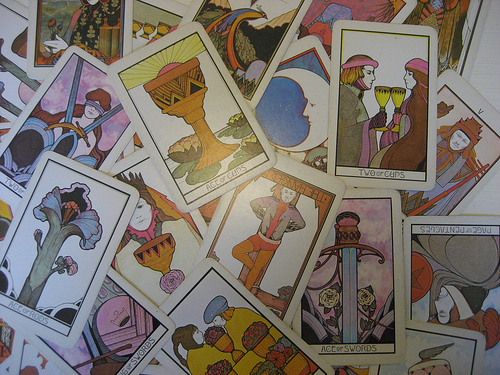
It's in the Cards
Invest in a deck of tarot cards. Tarot cards have a great many stories locked away in them, that can only be found with different card combinations.
This doesn't mean that you need to become a tarot reader.
A tarot deck is divided into two categories: The Major Arcana and Minor Arcana. The Minor arcana is subdivided into suits, like a normal deck of playing cards, though instead of diamonds, spades, clubs and hearts, you have cups, swords, wands, and coins (or various representations of them). Each of the minor arcana, also like a normal deck of cards, has royal cards. Though unlike a normal deck of cards, there are four royal cards per suit. Page, Prince, Queen, King (or similar variants). Each suit represents a different element: earth, air, fire and water. Each of these elements comes with its own characteristics. Fire is very energetic. Water is ever changing. Air is lusted after but can never be caught. Earth is steady and stable. Each royal card comes with a different set of physical descriptions based on their element. The Kings are older men, wise. Queens are generally older women, or mothers, The Prince is younger men, and pages are younger women. Applying this to an element, they take on more character: the prince of fire is a young man who can't stay put, who is full of energy. The Queen of Air is a seductress that every one yearns for in one way of another, but she slips through whatever fingers try to grasp at her.
The rest of the minor arcana - the Ace through ten represent smaller events. The three of cups is celebration. A party. The seven of wands is a conflict. The five of coins is a rough patch with knowing that it is only momentarily. The Five of swords is smugness which leaves a person open in unseen ways.
The major arcana represent larger events. The Tower is something which has been built on a shaky foundation and is now crumbling down to the ground. The person who draws this card must start a new from scratch. The Fool is the beginning of the journey. He is careless but ever optimistic. The Devil is facing one's demons. The Hanged Man is gaining a new perspective.
With this in mind, having a tarot deck can allow you to draw at random to form a story. You can separate the Major arcana cards (of which there are 22), the royalty cards (of which there are 16) and the rest of the minor arcana (Of which there are 40), shuffle them and draw a card at random to create a story. The queen of water with the three of cups and the Tower. This could equate to a woman of high status who has built a financial empire and married for status is at a a party with some close friends, and finds that her husband has been having an affair and is leaving her for one of her close friends. Her financial empire which she has worked so hard toward was started in his name, and thus has been ripped out from under her. She has nothing and must start a new life from nothing.
If you are worried that mountains of research might need to go into this in order just to get some inspiration - don't fret! The vast majority of tarot decks comes with a little cheat-sheet booklet which tells the meaning of each card. There is also copious amounts of information on the internet regarding the tarot.
Another exercise that can be done with these cards is simply to draw a card at random and look at it. See what is in the background in the distance. Why is the person in the card smiling lightly but with storm clouds behind him? Why are there roses on one side of the card, and lilies on the other side? Study the card for five minutes then form a story about what you have observed.
Are You Pumped Yet?
There are many ways you can find inspiration. The key is to think outside of that damn box! Sometimes the walls are high and it's hard to break through them, but coming up with ways to generate creativity is a level of creativity in itself. What inspired you before?
Ask questions about everything. As why the sky is blue, as who your boss was when he was a kid. Ask why that person chose to dress their dog up as Catwoman on a Tuesday. And then make up your own answers.
Now go write!



